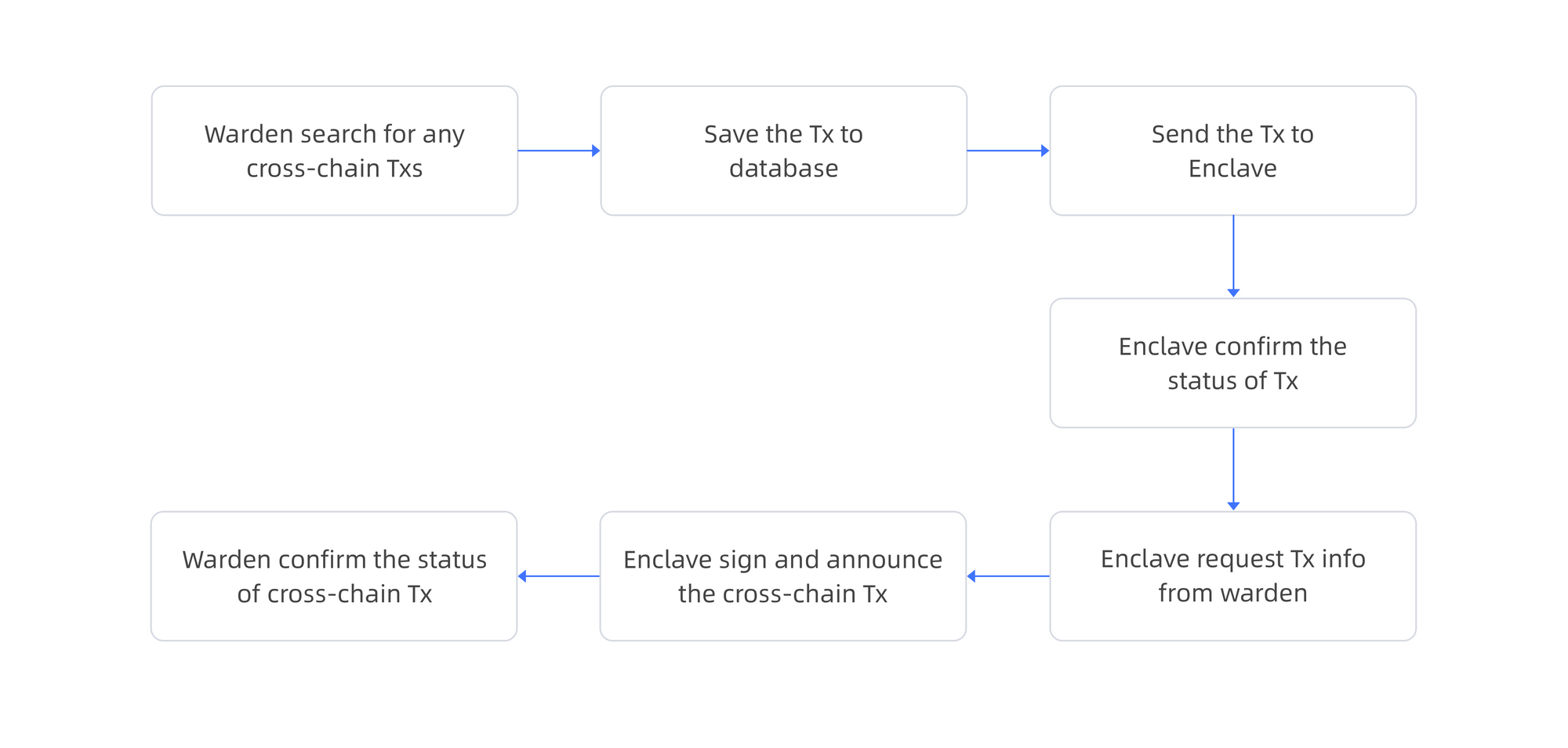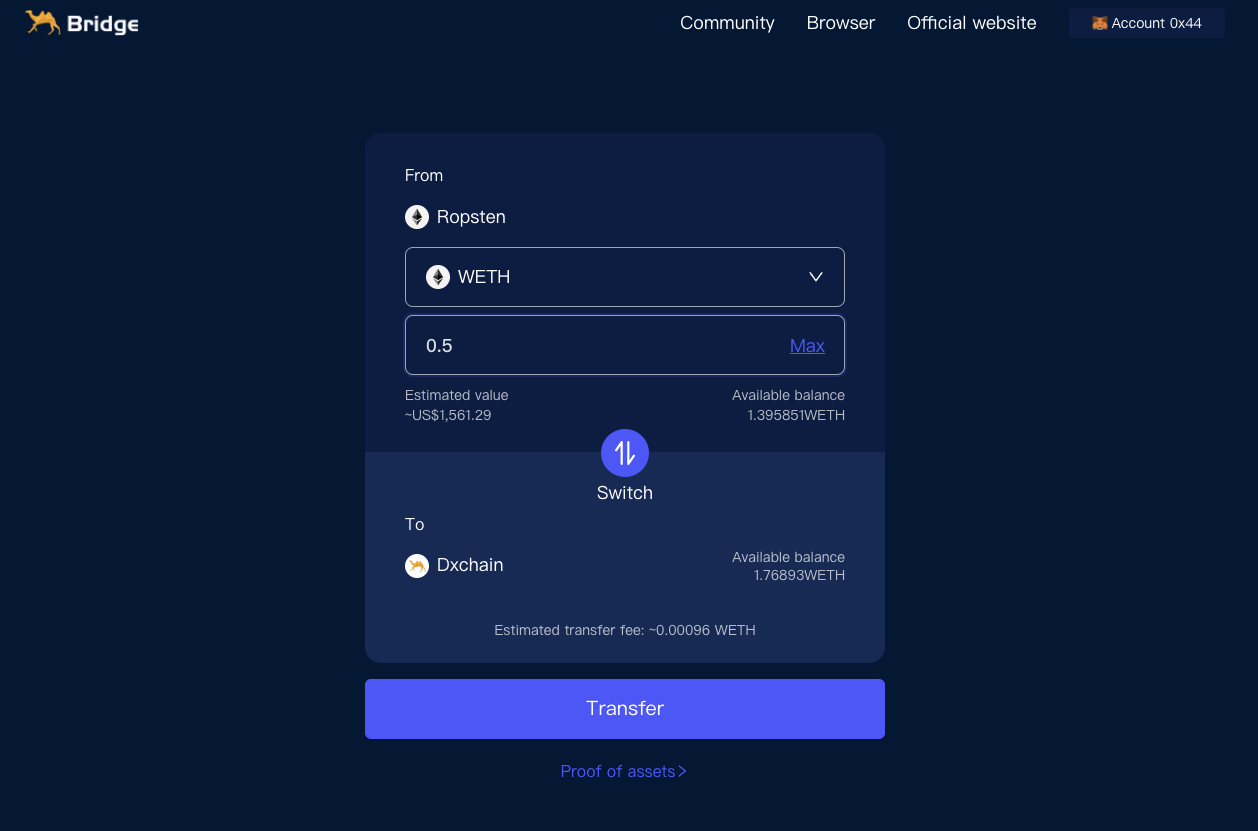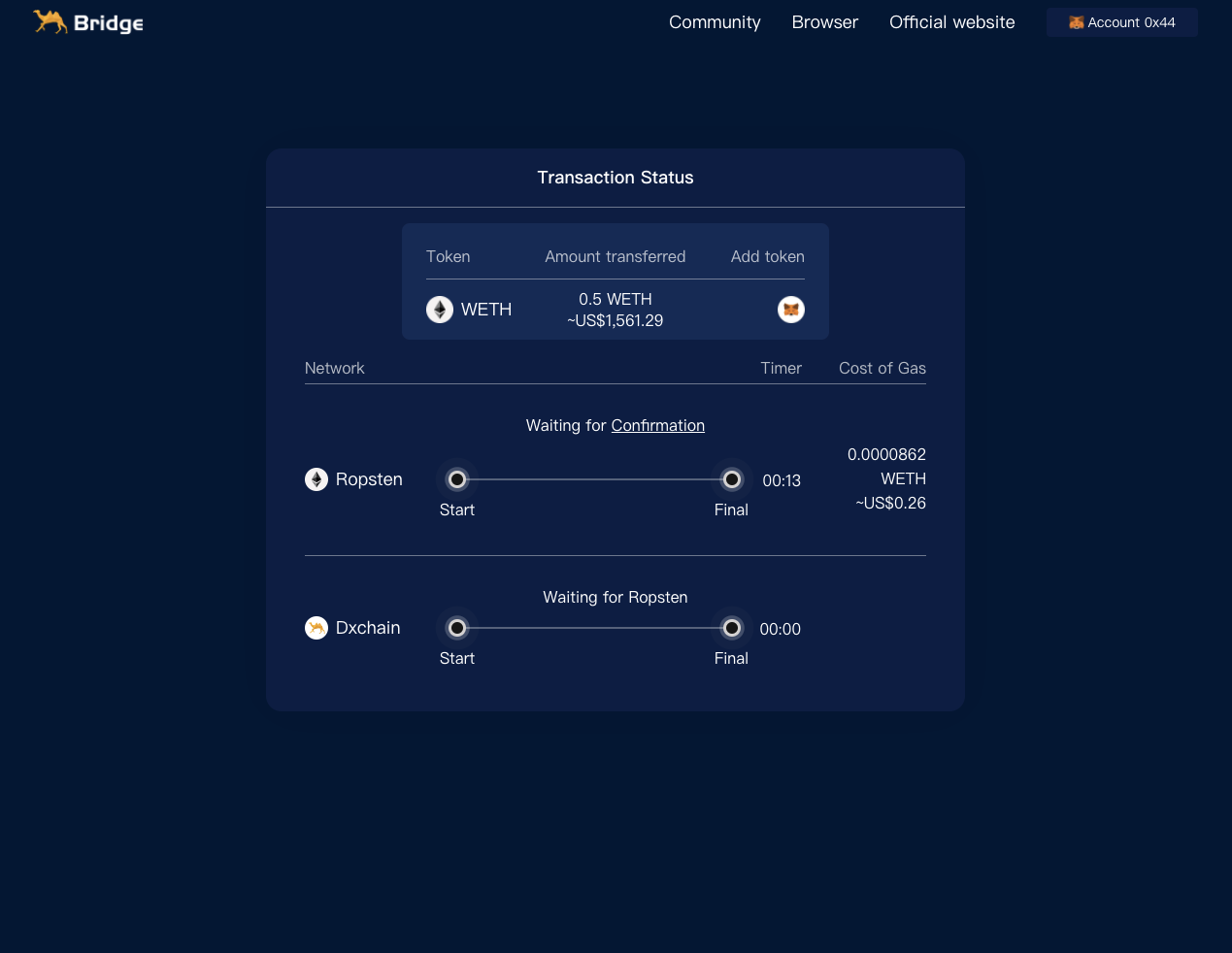Recently, the DxChain team has completed another important milestone: the internal demo of cross-chain bridge DxBridge Beta is finished! The details of the demo of DxBridge are hereby disclosed to you for a better overview.
What is DxBridge?
DxChain will dive into smart contracts and cross-chain in 3.0, and is committed to vigorously developing cross-chain economy and multi-chain ecosystem with more mainstream projects, making DxChain a part of the interoperability of DeFi.
The cross-chain bridge is crucial for connect DxChain and other chains with different protocols or smart contracts, enabling users to swap assets without any centralized platforms. Nevertheless, ensuring users' property security is the premise when we are build the global asset network.
Take DxChain and Ethereum as an example. When a user needs to transfer DX tokens from Ethereum to DxChain, a certain number of DX tokens on the Ethereum will be transferred to an official public address, which is listened to by multiple validators. DxChain will mint a corresponding amount of DX tokens for the user (with a portion of the handling fee deducted) when most validators confirm the transaction.

Please refer to the LitePaper documentation for more technical details: Litepaper - Cross Chain
Potential of DxBridge
- Compared with other cross-chain bridges, which require users to authorize assets in layer 1 before releasing them, DxBridge can complete cross-chain transactions with only one click, making it more convenient for users to utilize;
- Avoid the complex process and high handling fees when trading on a centralized exchange while eliminating the risk of hacking attacks;
- The block generation time of DxChain 3.0 is only 3s/block, and the efficient throughput can provide lower transaction fees and a much faster transaction process.
Demonstration
Next, we will demonstrate how DxBridge works by sending assets from the Ethereum testnet Ropsten to the Heco testnet.
*Since the DxChain 3.0 testnet is still under development, the Heco testnet is used to demonstrate the DxBridge cross-chain program.
Step 1: Select the cross-chain token and fill in the amount, click "transfer"

Step 2: Confirm the transaction on the MetaMask

Step 3: Wait for the backend to confirm the transaction sent by the user in ethereum ropsten

This step depends on the congestion of the Ethereum network and usually requires 35 blocks to confirm, which is approximately 8 minutes.
Step 4: Wait for the backend to send the transaction on the heco testnet
Step 5: Confirm cross-chain transaction

Future Vision
The future of blockchain will be all about DeFi ecosystem and cross-chain interoperability. How to make assets transfer between multiple chains more efficiently, increase the utility of DX and stimulate the potential, connectivity and scalability will be the following goals of the DxChain team.
